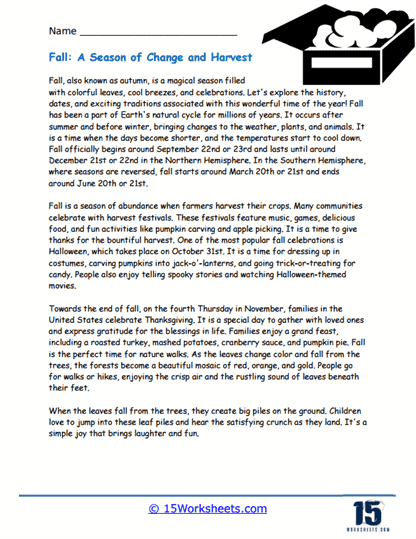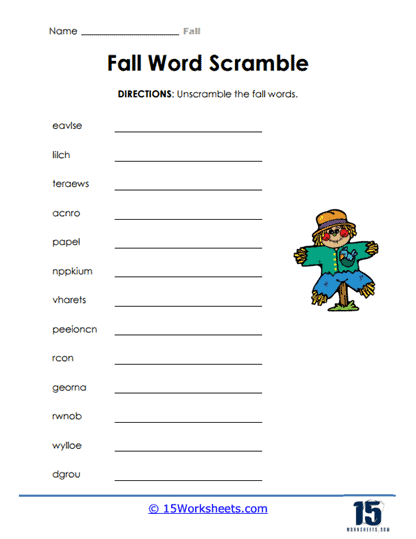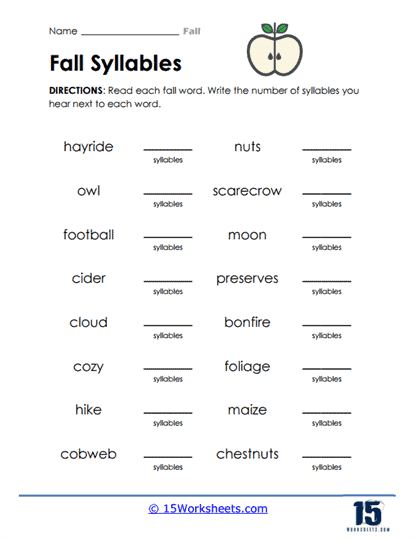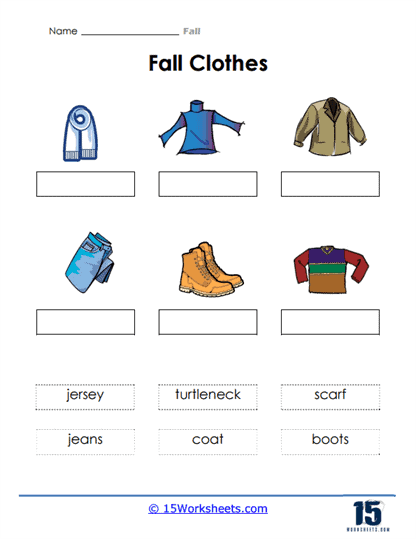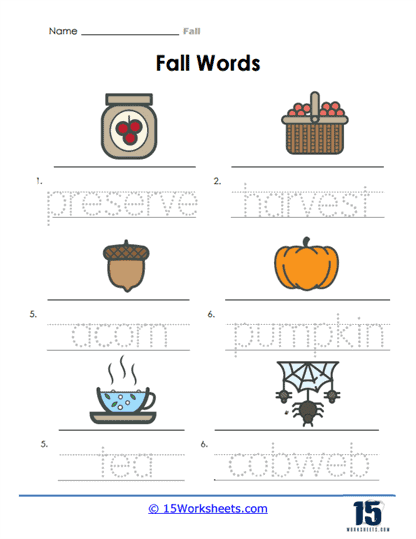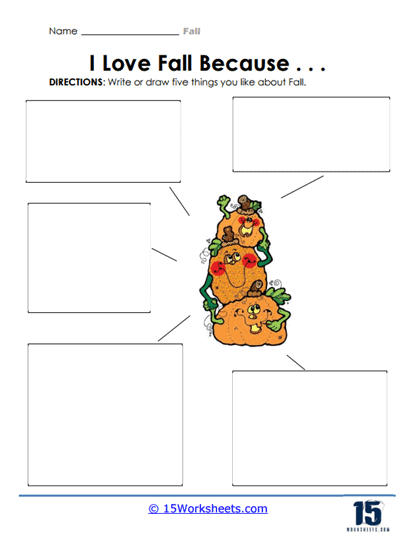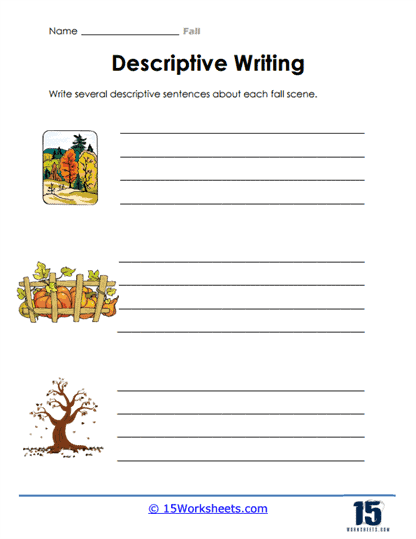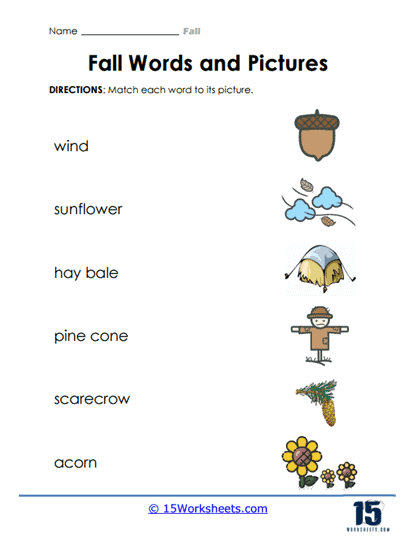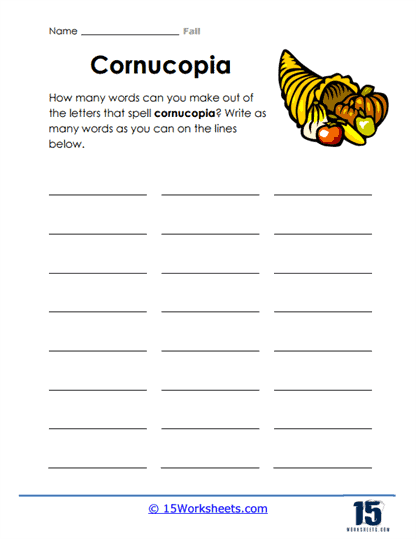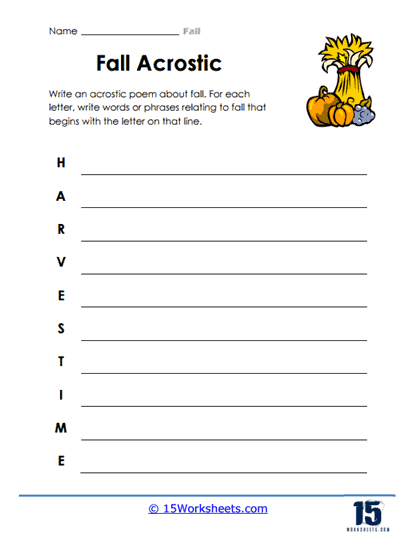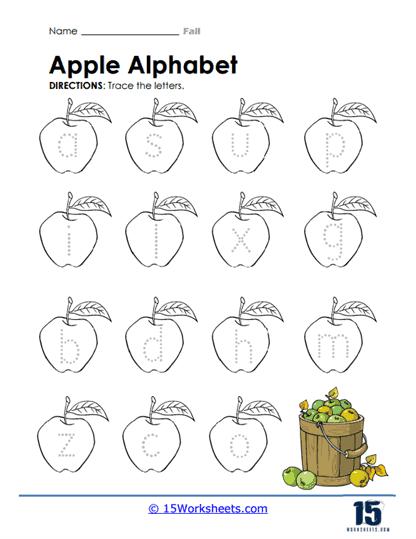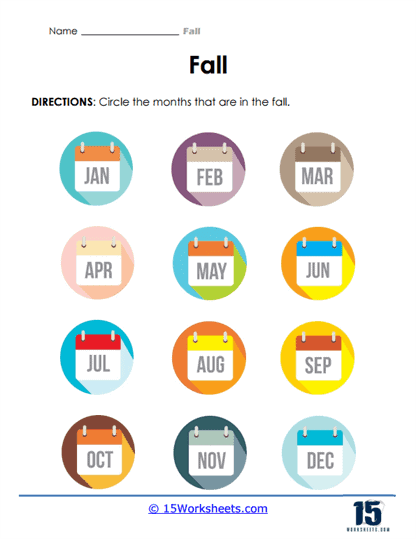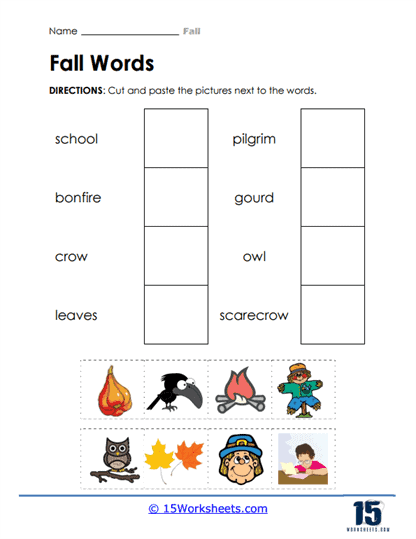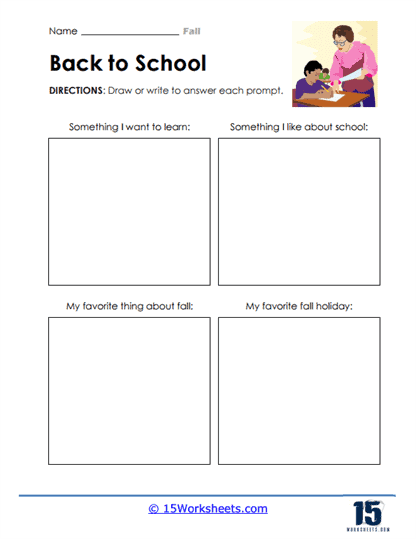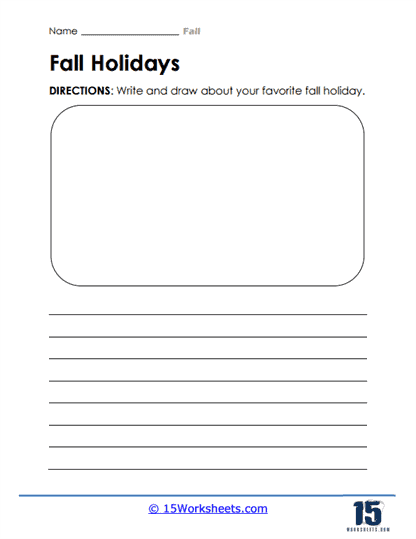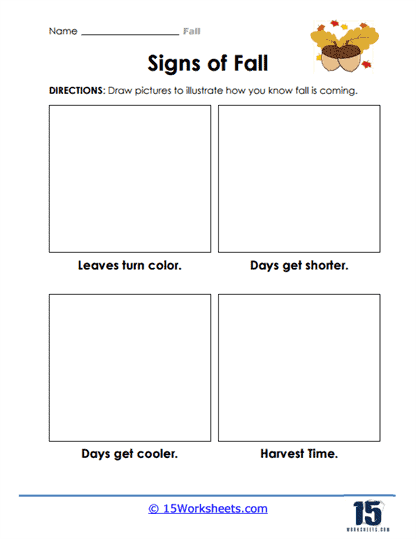Fall Worksheets
All About These 15 Worksheets
This series of 15 worksheets is an engaging educational resource designed to immerse students in the beauty, changes, and activities associated with the fall season. These worksheets provide them with an opportunity to learn about the unique characteristics of autumn, including nature, weather, holidays, and cultural traditions. Through a variety of activities, students will deepen their understanding of fall while fostering observation skills, critical thinking, and creativity. Through these worksheets, students will:
- Expand their autumn-related vocabulary through fun exercises like Word Unscramble, Fall Syllables, Fall Clothes, Word Tracing, and more;
- Express their thoughts, feelings, and experiences related to the fall season;
- Describe the environment during fall season by writing their own sentences that use descriptive language;
- And show their creativity by drawing scenes they see during the fall season.
This series provides an immersive and educational resource for students to deepen their understanding and appreciation of the fall season. Through activities encompassing nature exploration, vocabulary building, weather science, harvest traditions, cultural awareness, and personal reflection, students will foster observation skills, critical thinking, and creativity. Overall, these worksheets promote a sense of curiosity, empathy, and connection to the natural world, fostering a meaningful and enriching experience of the fall season for students.
What is the Fall Season?
The fall season, also known as autumn, is one of the four main seasons that occur in temperate regions of the Earth, along with spring, summer, and winter. It generally spans from September to November in the Northern Hemisphere and from March to May in the Southern Hemisphere.
During the fall season, the days gradually become shorter, and the temperatures start to cool down as the Earth’s axis tilts away from the sun. This change in temperature and sunlight triggers a range of biological processes in plants and animals, preparing them for the colder months ahead.
One of the most noticeable features of fall is the changing color of leaves in deciduous trees. As the days shorten and temperatures drop, the green pigment chlorophyll breaks down, revealing other pigments like carotenes and anthocyanins, which cause the leaves to turn yellow, orange, red, and brown. Eventually, the leaves fall off the trees, giving the season its name.
Fall is also a time for harvest, when many crops, including apples, pumpkins, and various root vegetables, are gathered and stored for the winter months. In many cultures, the fall season is marked by festivals and celebrations, such as Thanksgiving in the United States and Canada, or the Mid-Autumn Festival in China and Vietnam.
Tips For Teaching About the Fall Season
When teaching about the fall season, it is important to begin with an introduction that covers the basics, such as when it occurs and the reasons behind the changes in weather and daylight. Explaining the science behind leaf color changes, including the role of chlorophyll and other pigments, can help students better understand this colorful time of the year. Incorporating hands-on activities, such as collecting and observing different types of leaves, can engage students and provide opportunities for tree identification. Additionally, discussing cultural and historical aspects of the season, like fall festivals and holidays, can help students understand the importance of the harvest season in agriculture and its connection to various celebrations around the world.
Exploring animal adaptations during the fall, including hibernation, migration, and changes in behavior, can also provide valuable insights into how nature prepares for the colder months ahead. Encouraging creative expression through fall-themed art projects, writing prompts, or poetry exercises can help students connect with the season on a deeper level. Using multimedia resources, such as videos, books, or interactive websites, can reinforce concepts and engage students with different learning styles.
Planning a field trip to a local farm, pumpkin patch, or apple orchard can give students a firsthand look at the harvest process and the changes in the environment during the fall season. Finally, creating a fall-themed classroom by decorating it with fall colors, leaves, and other seasonal items can foster a cozy atmosphere that encourages curiosity and learning about this fascinating time of the year.






